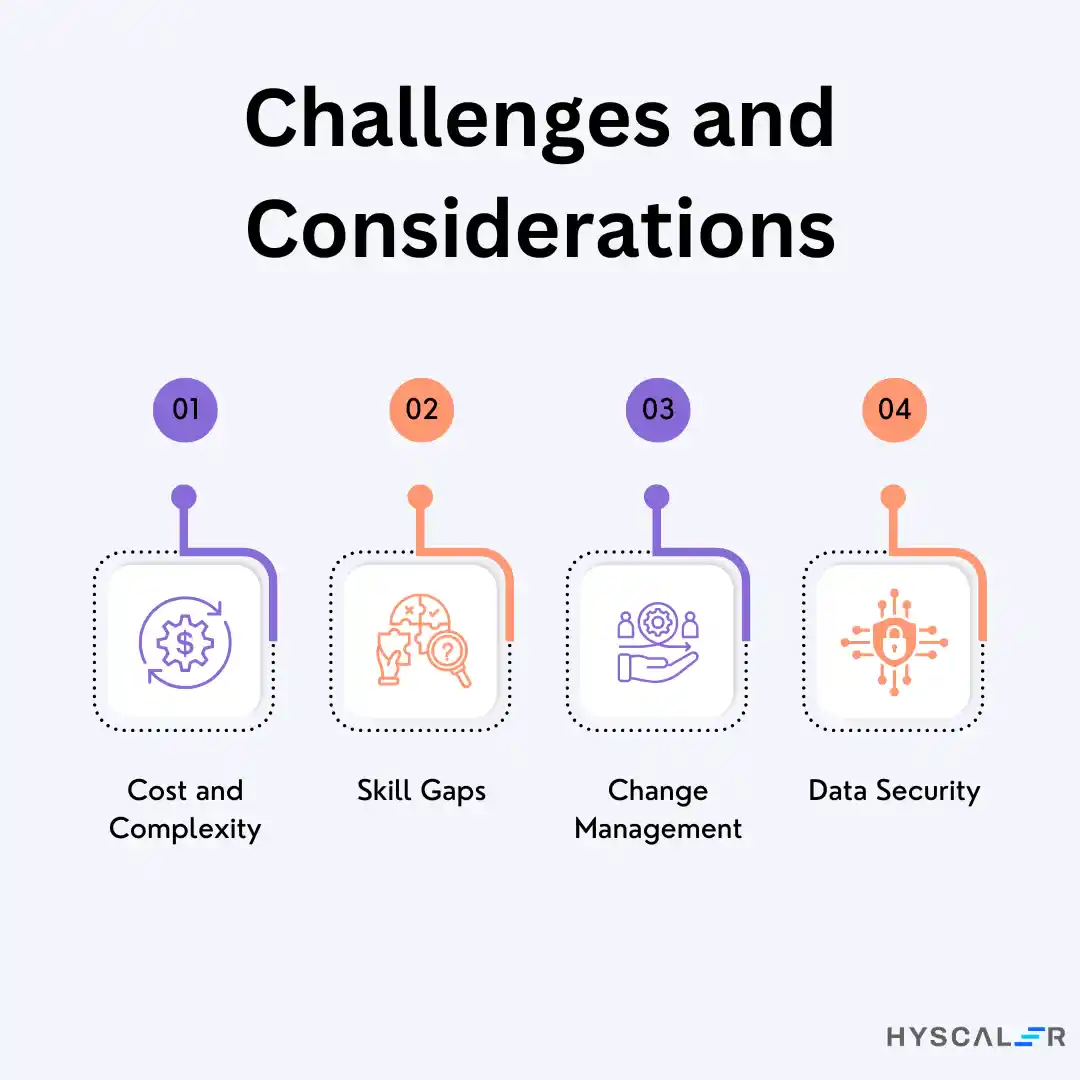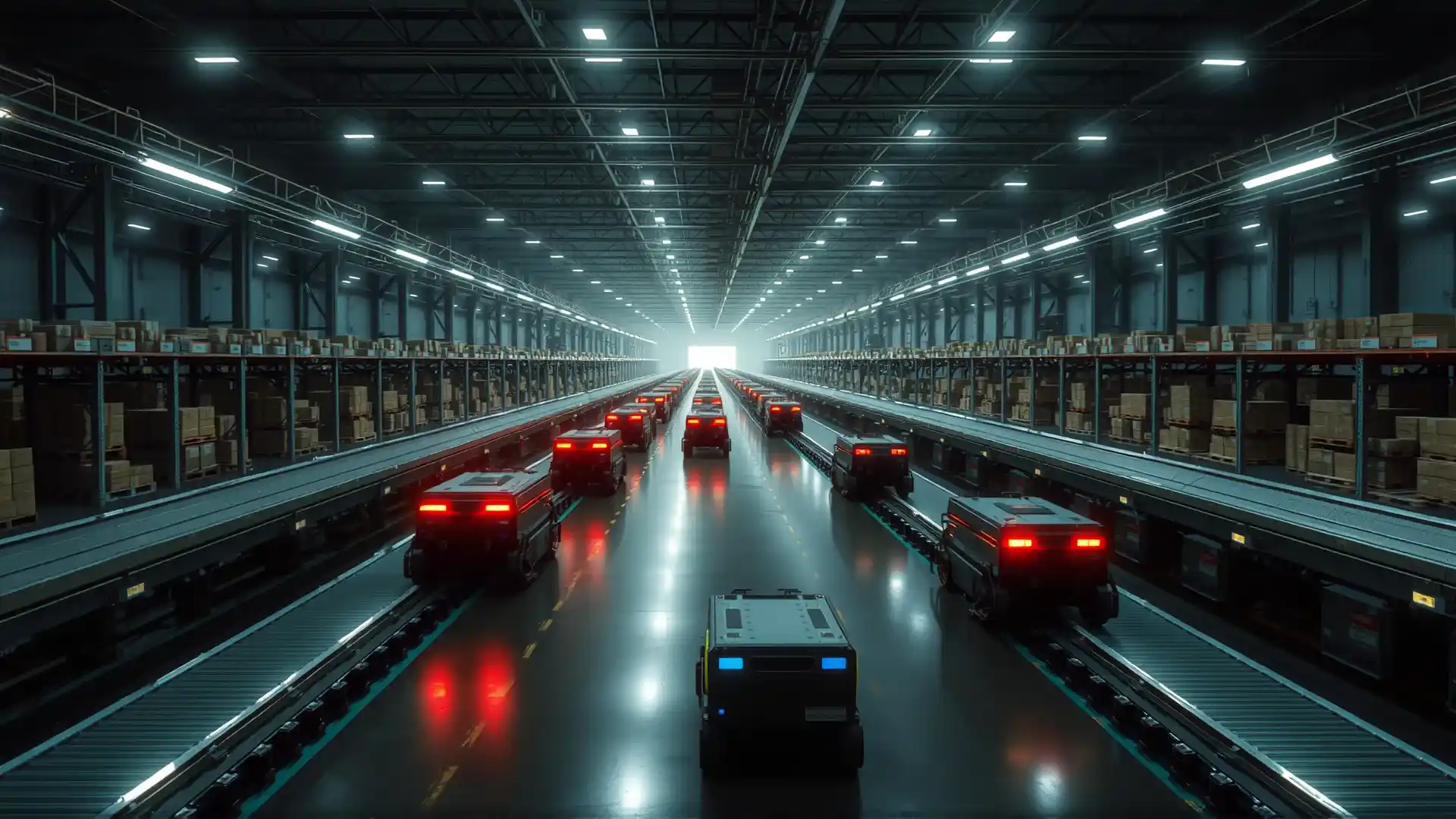Table of Contents
Hyperautomation represents a turning point in technological evolution. With the relentless speed of technological innovation, companies do not take measly steps. Nowadays, tasks within organizations are increasing under pressure to deliver results that not only maximize resource utilization but also inevitably facilitate innovation and leverage new opportunities for sustainable growth. Hyperautomation, a framework combining advanced technologies and strategic planning, encapsulates this transition and brings unprecedented efficiency.
The basic process automation has already been through the advantages of one benefit or another experience all over the world. Tasks once considered tedious or time-consuming have been handed off to machines, liberating human resources for more intricate, strategic undertakings. Yet, with the growth of industries, so needs to have more intelligent and potentially interconnected systems to reflect this.
Organizations are no longer satisfied with a basic level of automation of tasks; they look for intelligent, autonomous systems that can learn, solve problems, and continuously improve. Hyperautomation represents the next frontier, transforming the way businesses are run and innovated.
What Makes This Different?
Let’s start with what sets this evolution apart. Instead of the usual approaches, which commonly necessitate rigid, task-specific programming, this new generation welcomes a grander view. It involves the integration of advanced technologies such as artificial intelligence (AI), robotic process automation (RPA), machine learning (ML), natural language processing (NLP), and process mining. On their own these tools automate not only tasks, but also analyze, learn, and get better with time.
Take the financial sector as an example. In the past, banks used very basic algorithms to categorize transactions or to find anomalies. Now, intelligent systems analyze vast datasets, predict potential fraud, and adapt their algorithms based on patterns and trends. This technology is faster and more accurate than any human team would be able to do.
Efficiency Redefined with Real Data
The effect of hyperautomation is real, and not just theoretical-it’s already being experienced in real-time across industries. Take these persuasive statistics that illustrate to what degree the automation technologies are changing business operations and delivering major efficiency improvements:
According to Gartner Research, organizations using next-generation automation technologies can reduce operational overhead by up to 30%. This diminution is not confined to a subset of isolated tasks, but it is widespread over the entire set of operations, from everyday administrative procedures to high-level decision-making. Automating routine jobs and improving workflows allows companies not only to cut down costs but also to free up resources that can be funneled into activities that open up approaches to growth and innovation.
According to McKinsey’s Report, a good part of the business repetitive tasks in up to 50% of industries can be automated by technologies available now. These tasks vary from data entry to simple customer service and consume a lot of time and resources. By deploying automation, businesses can eliminate manual labor, reduce human error, and accelerate their processes. This change enables workers to concentrate on value-added tasks, namely, problem-solving, creative strategy, and customer relationship management, thereby increasing the level of productivity.
In 2023, the world investment in automation technologies exceeded $600 billion, reflecting the increasing awareness of the importance of automation for business success. With the recognition amongst a growing number of businesses of the opportunity to gain in efficiency, cost, and better decision-making these investments are only set to grow. The magnitude of the investment implies that automation is not a luxury, but a requirement for organizations to sustain a competitive edge in a world that is becoming ever more complex.
These numbers are more than just figures on a report—they represent a profound shift in how industries approach operations. From healthcare and retail to manufacturing and logistics, hyperautomation is opening the floodgates to previously unimaginable levels of efficiency and is transforming the way businesses work. By integrating advanced technologies into core processes, organizations are not just improving their bottom lines—they are setting new standards for what is possible in the digital age.

The Magic Ingredients Behind Hyperautomation
To know why hyperautomation is a game-changer, it is important to unpack the technologies that are fueling this revolution. These elements are combined to produce intelligent systems that go beyond mere automation, and at the same time improve workflows, support better decision-making, and help with continuous improvement.
1. Artificial Intelligence (AI) and Machine Learning (ML)
AI provides the ability to scrutinize large volumes of data, identify patterns, and autonomously decide. In the manufacturing field, AI can help forecast, such equipment failure, in advance and prevent the unavailability of the equipment leading to downtime and cost savings. This cognitive ability enables AI to optimize operations and elevate decision-making in a broad range of different industries, ranging from healthcare to logistics.
2. Robotic Process Automation (RPA)
RPA has been widely used for automating repetitive tasks, but its integration with AI takes it further. AI-driven RPA bots not only automate tasks but also exhibit an understanding of the context. For example, in customer service bots can recognize sentiment and recommend escalation when appropriate. This integration leads to intelligence, flexibility, and the ability to perform increasingly complex workflows in RPA.
3. Process Mining
Process mining is used to extract the inefficiencies and bottlenecks in business processes. Through the understanding of how processes develop, some organizations may identify a process to be improved, and simplify organization processes. With this technology, companies can achieve waste reduction, production optimization, and data-based decision-making, which leads to higher efficiency overall.
4. Natural Language Processing (NLP)
NLP allows machines to learn and communicate in human language. It drives chatbots, virtual assistants, and sentiment analyses that improve customer interaction. For instance, NLP-based chatbots can address customer questions and identify emotional expression in their speech, and thus deliver more tailored and efficient service.
5. Integration Platforms
These platforms are interfacing among and between systems, enabling them to flow without interruption from and between, organization systems, and collaboration within and between the organization. For example, IEPs allow end-to-end-automation by connecting heterogeneous systems including RPA, AI, and NLP to ensure seamless integration of these systems. This creates a unified, streamlined approach to automation and improves overall business performance.
A Look at Real-World Applications of Hyperautomation
Hyperautomation is creating a buzz across sectors, improving efficiency, accuracy, and productivity. The following are a few examples of how hyperautomation can transform different industries along with supporting real-world data:
1. Healthcare
In healthcare, hyperautomation is transforming hospital operations. AI-based diagnostic tools can help with screening for cancer or cardiovascular diseases with enhanced accuracy compared to conventional approaches. Automated systems control from the patients’ files to scheduling, diagnosis, and post-operative care.
According to an Accenture study, AI has the potential to save healthcare an estimated $150 billion per year by 2026 through its ability to increase efficiencies and decrease errors.
When AI-based tools are combined with automated administrative steps, healthcare professionals have a greater opportunity to concentrate on critical tasks, in turn promoting positive patient outcomes and cost savings.
For example, Mount Sinai Health System in New York has embraced AI-enabled solutions for the diagnosis of diseases and forecasting patient prognosis, thereby enhancing patient care and operational effectiveness.
2. Retail
In the realm of retail, hyperautomation helps enterprises optimize inventory management, and future customers’ demand and optimize their supply chains. Amazon uses predictive analytics and machine learning algorithms to forecast demand and ensure products are in stock when customers need them. According to Forbes, 80% of customer interactions in retail will be powered by AI by 2024, with chatbots and automated customer service systems being at the forefront.
Hyperautomation packages not only assist with inventory need prediction but also with the checkout process. Using Amazon Go store opening, shoppers are no longer required to manually check out, as AI monitors items and automatically charges their accounts.
3. Finance
The financial sector has been using automation to control compliance, fraud detection, and loan processing. AI and RPA have been instrumental in speeding up tasks that traditionally took hours, ensuring greater accuracy and reducing human error. For example, JP Morgan’s COiN platform uses machine learning to review legal documents and complete tasks in seconds that would otherwise take 360,000 hours annually for its legal team.
AI-based credit scoring systems have enhanced the loan approval process. As pointed out in a McKinsey report, AI lending engines have produced a 15% increase in approvals for loans, which is favorable to both lenders and borrowers by delivering more precise estimations of credit risk.
4. Logistics
The logistics sector is enjoying the benefits of hyperautomation through technologies such as automated warehouses, AI-powered route planning, and autonomous driving. Companies like DHL and FedEx employ sophisticated automation technologies to speed up deliveries and reduce operational costs. At DHL’s innovation center, the use of AI-driven robotics has helped optimize warehouse operations, resulting in a 30% decrease in order fulfillment times.
In addition, FedEx uses AI for route optimization, helping to decrease fuel consumption and improve delivery times. According to a report by PwC, logistics companies leveraging AI and automation can reduce operational costs by up to 25% while improving delivery times by 10-15%.

Final Thoughts
Hyperautomation is no longer a catchphrase, but a part of modern business reorganization. With the business world’s rising complexity and competitive pressures, it offers the instruments for making processes more efficient, saving money, and pursuing new growth areas.
Gartner research predicts that by 2025, companies using this technology will enable up to 30 percent lower operational costs and contribute to better decision-making and agility. The promise of hyperautomation is further promised by progress in AI and IoT, which will allow systems that are not just good at optimizing workflows, but learning, adapting, and innovating autonomously.
For companies, hyperautomation is the key to competition in a constantly changing world. Doers can make companies more efficient, drive scalability, and change the paradigm of their industries’ attainable paradigm. Are you ready to hear about how hyperautomation can lift your business to the next level? The journey starts now.